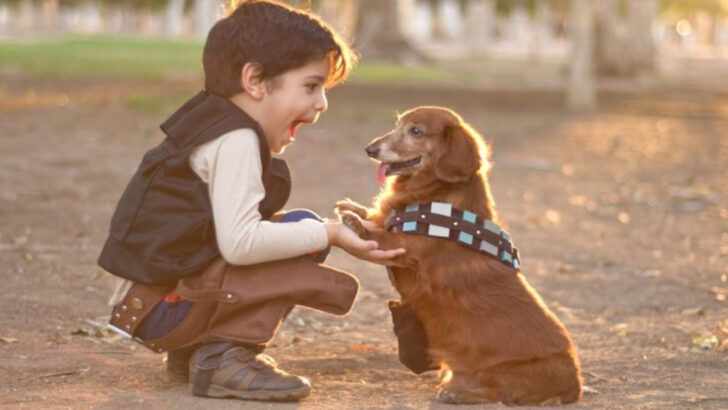Kids and dogs speak a secret language—and it doesn’t need a single word.
No grammar. No vocabulary drills. Just wagging tails, sticky hands, giggles, and soulful eyes.
It’s wild, messy, and sometimes looks like absolute chaos—but it works. A toddler’s squeal, a pup’s bounce, the way they mirror each other’s moods like little emotional sponges.
They just get each other.
This connection is pure magic. No scripts. No awkward small talk. Just raw, unfiltered understanding that flows through touch, play, and those hilarious facial expressions only a dog or a three-year-old could pull off.
Ready to see what this silent symphony looks like?
Here are ten remarkable ways children and dogs talk, love, and laugh—without saying a word.
Eye Contact
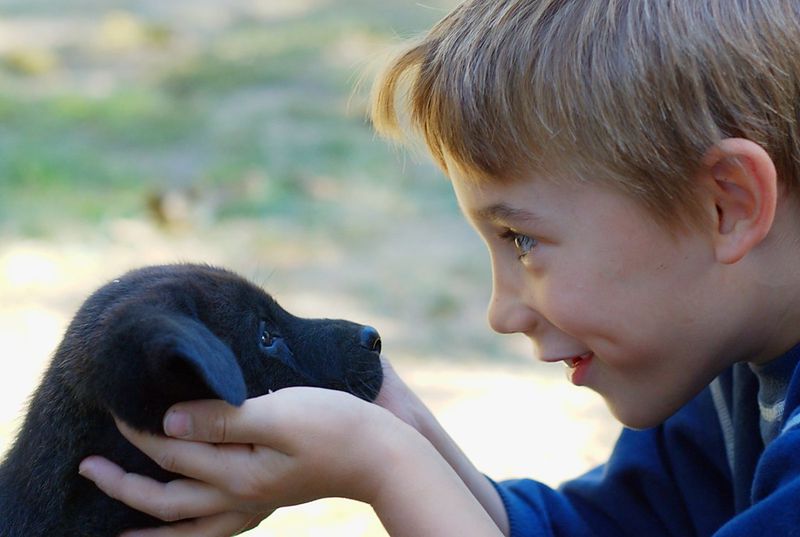
The power of a gaze is remarkable. When a child and a dog lock eyes, an unspoken connection forms. It’s as if their souls touch, understanding emotions without a single word. In moments of need, a dog’s gentle look can comfort a child, providing reassurance.
Sharing a silent conversation through eye contact, these companions express love and trust. A simple glance can mean excitement, curiosity, or even mischief. This silent exchange transcends human language, forging a deeper bond.
The beauty of eye contact lies in its simplicity. It speaks volumes without uttering a sound, creating a bridge between hearts.
Body Language
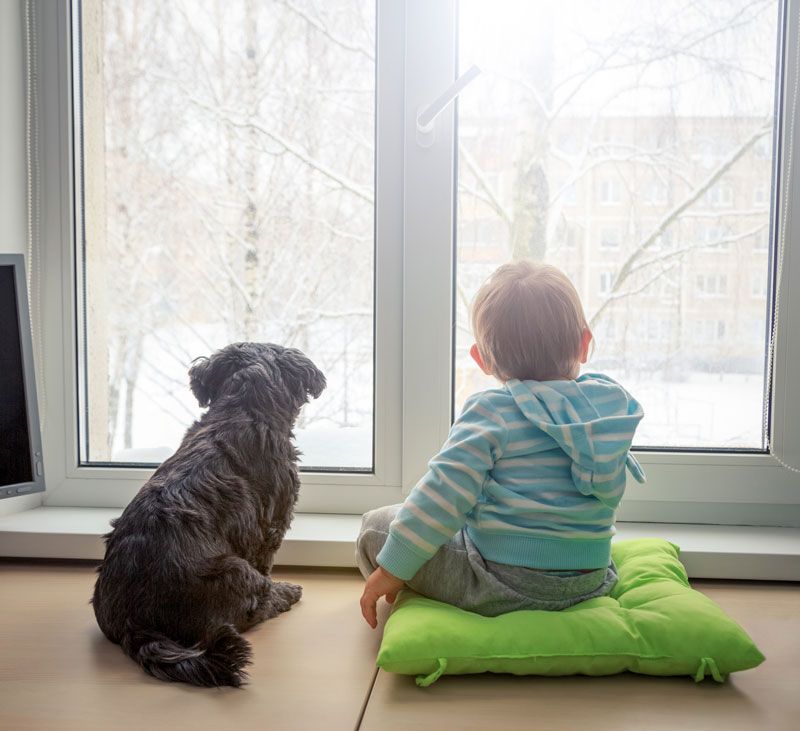
Every wag of a tail or tilt of a head is a story waiting to be told. Dogs and children often communicate through body language, using their entire bodies to convey emotions and intentions. A child’s playful leap can invite a dog into a fun game, while a gentle touch signals care.
Their interactions are like a dance, each movement a step in their shared language. This non-verbal communication is intuitive, requiring no words. Together, they create a symphony of gestures, highlighting their unique connection.
In this world of movement, words are unnecessary, and understanding flows naturally.
Playful Gestures
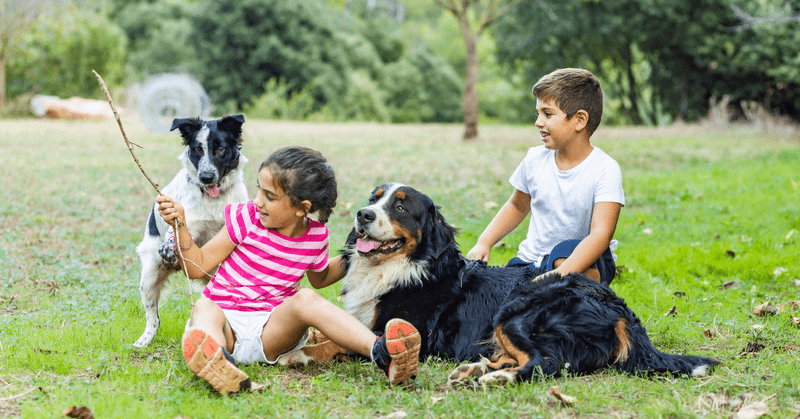
The language of play is universal. When a child throws a ball, and a dog eagerly retrieves it, they communicate joy and companionship. Such playful gestures foster understanding, breaking barriers that words cannot.
Through play, they express emotions, show excitement, and build trust. A simple game of fetch becomes a dialogue rich with meaning. It’s not just about the ball; it’s about sharing moments of happiness.
This playful interaction is spontaneous and heartfelt, capturing the essence of their bond. It’s a testament to how joyous communication can be without uttering a single word.
Facial Expressions
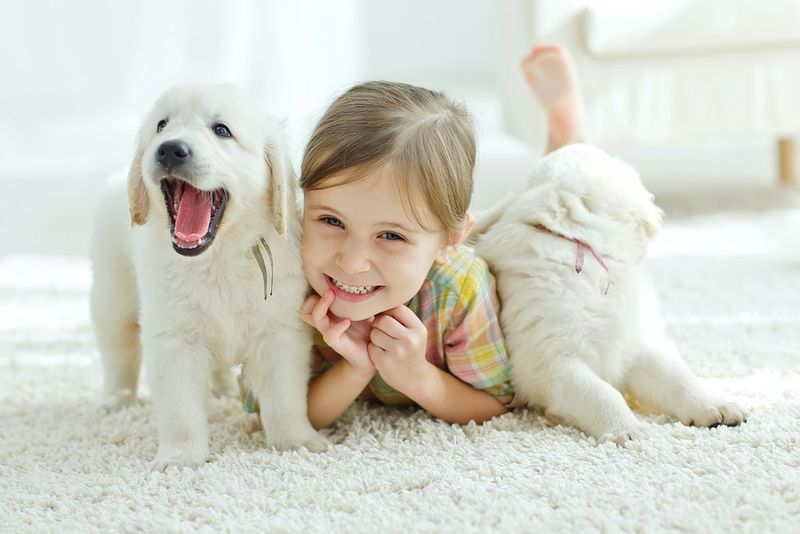
Faces are the windows to emotions. A child’s smile or a dog’s curious tilt of the head can convey complex feelings instantly. These expressions create a silent dialogue, full of understanding and empathy.
A raised eyebrow or a wide grin can mean different things, yet both child and dog understand the context. This non-verbal exchange is a testament to their innate ability to connect.
Through facial expressions, they build a world of shared feelings. This language of emotions is powerful, fostering a bond that words might struggle to explain.
Shared Silence
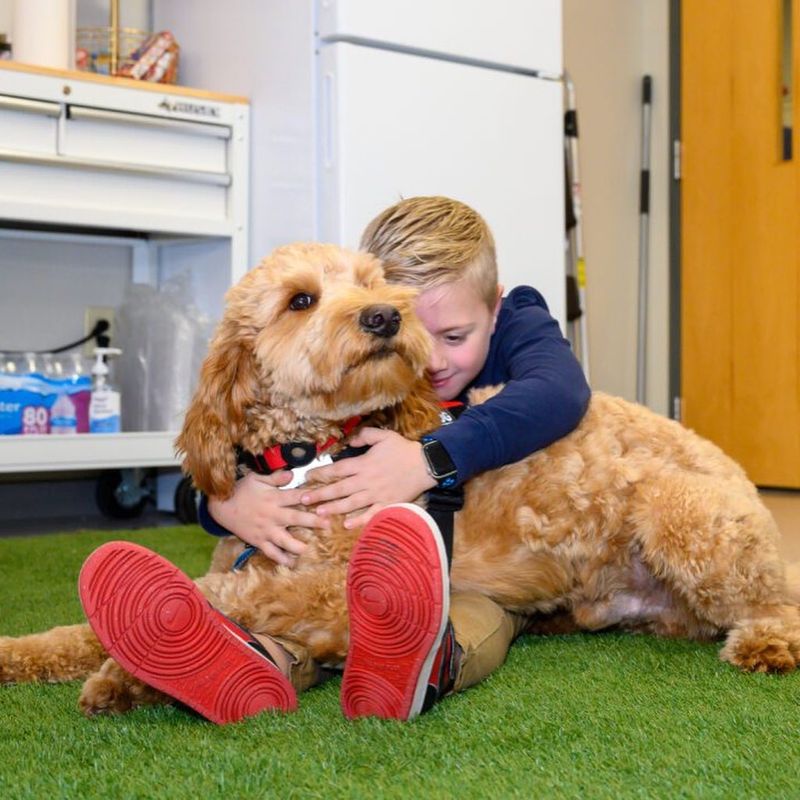
Silence speaks volumes. When a child and a dog sit together in silence, they share a moment of pure companionship. This shared quiet is comforting, a testament to their bond.
In these silent moments, words become unnecessary. The presence of each is enough, filling the air with understanding and love. It’s a language beyond words, where even silence is eloquent.
Such moments are rare and precious, where comfort is found simply in being together. This shared silence is a powerful communicator, reinforcing their connection without the need for words.
Mimicking Behavior

Imitation is the sincerest form of flattery. Children and dogs often mimic each other’s behaviors, creating a unique form of communication. When a child imitates a dog’s wagging tail or a puppy mirrors a child’s playful antics, they bond through imitation.
This mimicry fosters a sense of connection, understanding, and joy. It becomes a game, a shared language where actions speak louder than words.
Through mimicking, they learn about each other, strengthening their relationship. This playful imitation is not just about fun; it’s about connecting on a deeper level, surpassing verbal communication.
Emotional Intuition
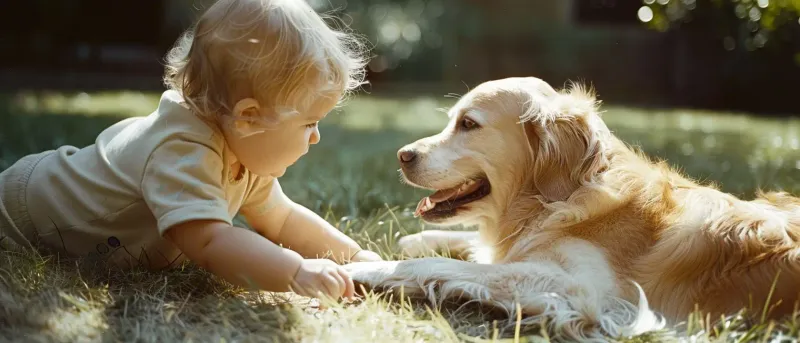
The bond between a child and a dog is often rooted in emotional intuition. Dogs sense a child’s feelings, responding with empathy and care. It’s as if they have an invisible thread that connects their hearts, allowing them to feel emotions without words.
A gentle nudge or a comforting presence can soothe a child’s sadness, showcasing a dog’s understanding nature. This emotional insight is mutual, with children also sensing their dog’s moods.
Such intuitive communication forms an emotional tapestry, weaving trust and love. It’s a silent agreement, a shared understanding that transcends verbal interaction.
Scent Sharing Secrets
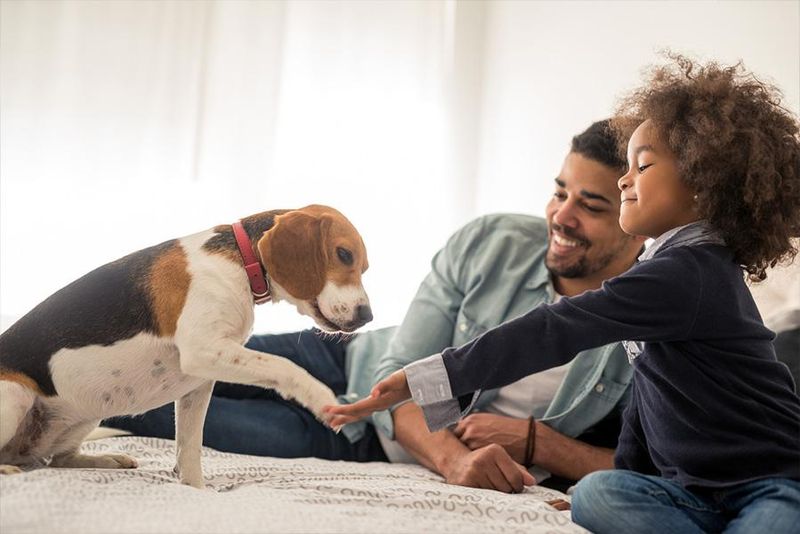
The world of scent is profound for dogs and captivating for children. A shared scent, like a favorite blanket or toy, becomes a bridge of trust.
Dogs, with their acute sense of smell, find comfort in familiar scents, while children learn to communicate trust and affection through this simple act.
This mutual exchange of olfactory signals strengthens their bond, creating a silent yet meaningful dialogue. It’s a form of communication that goes beyond words, speaking directly to the heart and creating an invisible link between the child and their furry friend.
Rhythm and Movement Connection

Children and dogs often find common ground in rhythm and movement. A child bouncing to music and a dog joining in creates an unspoken symphony of joy.
This shared experience of rhythm fosters a deeper connection, as both child and dog engage in spontaneous dance.
With each bounce and wag, they communicate happiness and excitement, building a joyful bond. It’s a dance of life, a celebration of the present moment, where words are unnecessary, and the shared rhythm says it all.
Shared Curiosity Adventures
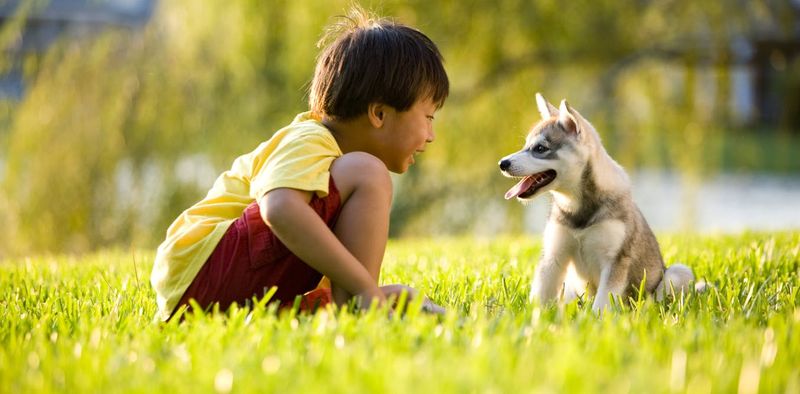
Curiosity leads both children and dogs to explore the world together, hand in paw. Whether investigating a new park or observing tiny creatures, their shared curiosity speaks volumes.
Through joint adventures, they learn from each other, understanding the language of exploration.
This shared curiosity fosters a bond that is both educational and emotional, where each discovery becomes a new story in their growing friendship. It’s a journey without spoken words, yet rich in understanding and companionship.

